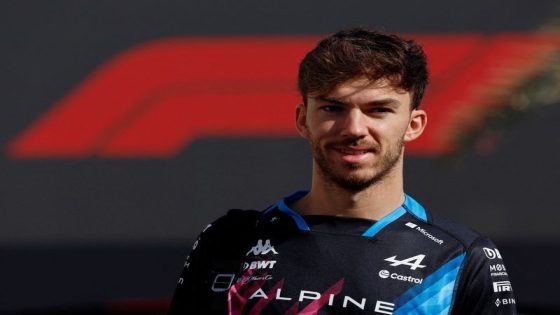Colorado football defensive back Shilo Sanders has employed at least three attorneys in three different time zones to help him get out of this mess – a bankruptcy case at age 24 with more than $11 million in debt.
In court filings, they’ve called it a “nearly decade-long saga to destroy a young man’s life.” But now as it prepares to heat up in court this summer, the case largely has been distilled into a dispute that centers on a single incident nine years ago when Shilo was just 15 years old:
Did Shilo Sanders cause permanent injuries to John Darjean, a security guard at his high school in 2015?
Or were those injuries pre-existing, including those that led to a previous spinal surgery for Darjean in 2014?
That’s one of the biggest questions in a strange case involving a high-profile college football player (Sanders) with a wealthy coach and father (Deion Sanders), who once dismissed the allegations against his son as false but since has seen them spiral into a bankruptcy filing by Shilo last October.
The goal for Shilo Sanders is to get that $11 million debt discharged in bankruptcy court instead of having it burden him after he moves on from college. Whether the court allows that comes down to that incident and whether Sanders acted “willfully and maliciously” then at age 15, according to a court filing by his attorneys.
“The only two narrow issues in dispute in this action are (i) whether the `injury’ claimed by Plaintiff (Darjean) arose from the alleged assault litigated in the trial court; and (ii) whether (Darjean) has met his burden under … the Bankruptcy Code by proving (Sanders) acted `willfully and maliciously’ with respect to that alleged injury,” Sanders’ attorney wrote in a court filing April 24.

What is at stake for Shilo Sanders?
The case already has reached the point where a bankruptcy trustee has requested access to Shilo’s home to do an inventory of his possessions, including his jewelry, so that they can be rounded up for sale to help pay what he owes.
But if Sanders and his attorneys succeed, he could move on in his life with relatively minimal damage to his bank account. In recent months, the case has grown contentious and could get much more expensive as it heads to a potential mini-trial over the incident in 2015. Sanders owes that debt mostly to Darjean, who wants to collect on it and said Sanders is not entitled to a discharge under the law of it because the debt stems from a “willful and malicious injury.”
“The norm is that debts are dischargeable” in a Chapter 7 bankruptcy case, said Angela Littwin, a bankruptcy expert and law professor at the University of Texas. But there are exceptions, and one of them is if the debt stems from willful and malicious conduct.
Is a mini-trial on the way?
In this case, the debt stems from a personal injury lawsuit filed by Darjean against Sanders in 2016, when Darjean claimed he suffered permanent injuries after Sanders assaulted him at his Dallas school in 2015.
The case finally went to trial in 2022, but Sanders didn’t show up for it, leading the court to award Darjean a $11.89 million judgment by default, including $2 million for future medical expenses, $3 million for future physical impairment and $2 million in lost future earning capacity.
Darjean “shall recover of and from Defendant, Shilo Sanders, the total sum of $11,890,937.42,” says the final judgment signed by a judge in May 2022.
Sanders still owes him but now wants a “fresh start, free from the oppressive burdens of his debts that would otherwise impede his future,” according to a court filing from his attorneys. To get that, he’s trying to raise questions about whether Darjean’s injury stems from another cause and to show he didn’t act willfully and maliciously as defined under the law. Sanders didn’t show up to dispute this at trial in Dallas in 2022 but wants to now in an effort to discharge the debt.
“Because the facts of the alleged assault weren’t actually litigated in state court, the bankruptcy court will need to hold what’s essentially mini-trial to determine what happened,” Littwin predicted. “And yes, the events of the alleged assault are relevant because if the bankruptcy court decides that Sanders’ role in them rises to the level of willful and malicious injury, then his debt to Darjean will not be dischargeable.”
What were John Darjean’s injuries?
Darjean, now 48, is a former baseball player out of Dallas Baptist who was drafted in the sixth round by the New York Yankees in 1997. He never made it to the major leagues and was working at Shilo’s school in Dallas on Sept. 17, 2015, when he attempted to confiscate Shilo’s phone at the request of Deion Sanders, according to Darjean’s complaint. Deion Sanders wanted to prevent Shilo from talking to his mother in the midst of an ugly dispute stemming from divorce and custody proceedings, the complaint said.
That’s when Darjean said Shilo “snapped.” He “took his elbow and slammed it as hard as he could, super hard, right at my chest and up,” Darjean testified previously. “… It drove it into my neck, and then I fell back.”
As a result, Darjean said he was taken to the hospital and underwent spinal surgery five days later at age 39. His complaint in the bankruptcy case said he sustained severe and permanent injuries “including a broken neck, damage to his cervical spine, permanent neurological injuries and irreversible incontinence.”
But Sanders’ attorneys have disputed this and has described Darjean as an “aggressor who is looking to take advantage of (Sanders’) potential and his familial connections.” Darjean previously underwent another spinal surgery, in 2014, long before the incident, according to court records. Security video that was made public of the incident also doesn’t show all that happened, only parts of it from a distance.
Sanders said in previous testimony that Darjean used excessive force and choked him. Witness statements supported that version of events, though Darjean testified in a pretrial deposition that Shilo was “pretending” to be choked.
The larger question raised by Shilo’s attorneys now is whether Shilo’s actions that day caused Darjean’s injuries or something else from before, such as injuries from his baseball career.
What if Shilo Sanders loses this case?
Darjean is seeking to have the court rule the debt to him is not dischargeable as a matter of law because it stems from established willful and malicious conduct.
In 2022, the trial court in Texas concluded that “Darjean’s injuries and damages were a foreseeable consequence of the physical assault perpetrated by Shio Sanders.”
Sanders didn’t show up to dispute it, however, leading to questions now about whether he’s too late to do so in bankruptcy court. That’s why his attorneys are raising new questions about his injury and whether they came from willful and malicious conduct by Sanders.
In general, money earned after a debtor files for bankruptcy is off-limits to creditors in a bankruptcy proceeding.
“It’s relatively rare for a debt to be non-dischargeable,” Littwin said. “But if you’re a creditor with a non-dischargeable debt, you can pursue collection once the case closes.”
That means if the court favors Darjean and doesn’t discharge that $11 million debt, Littwin said Darjean could renew debt collection efforts against Sanders, including from any earnings in the NFL.
The issue is expected to drag on well into the summer with more dueling court arguments in June and July. Sanders opens his final college season at home against North Dakota State Aug. 29.
Darjean’s attorney declined comment on the case. Sanders’ attorneys didn’t return messages seeking comment.
Follow reporter Brent Schrotenboer @Schrotenboer. Email: [email protected]
This article originally appeared on USA TODAY: Shilo Sanders bankruptcy case hinges on two issues from 2015 incident
Source Agencies


